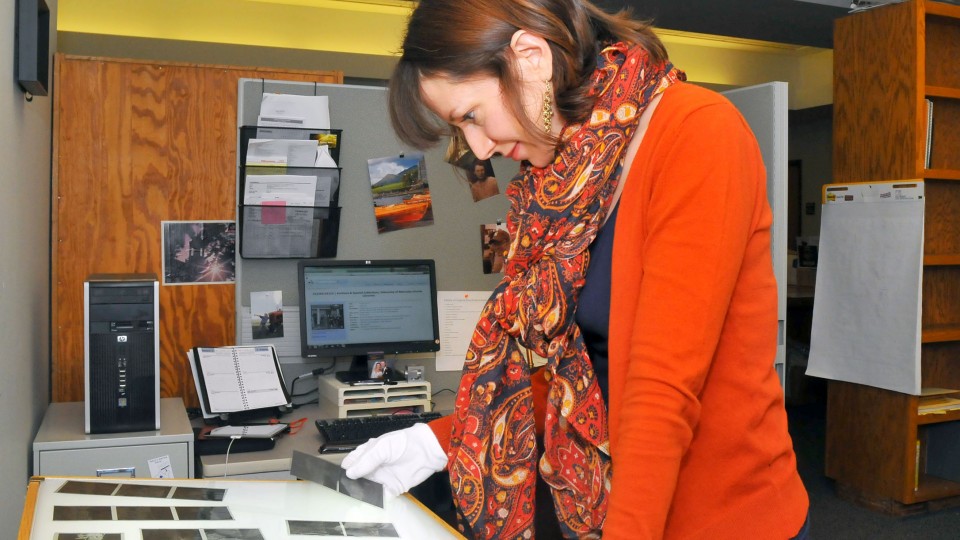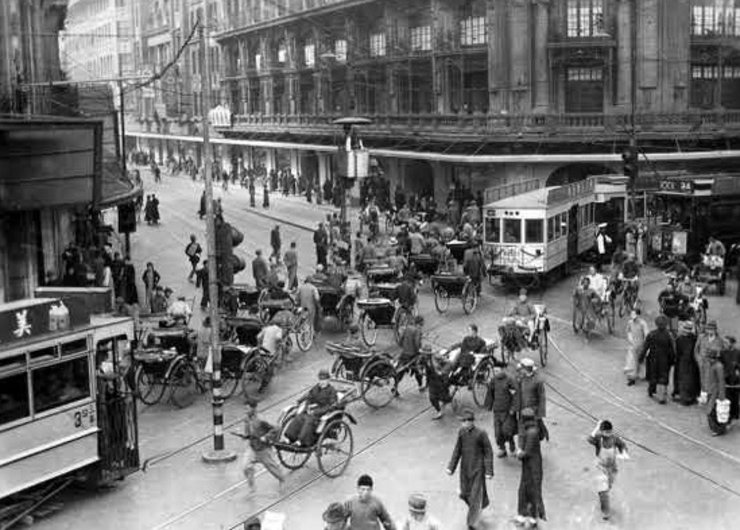· 4 min read
Historypin project expands access to university archives

An online historical archive is helping expand access to and information about UNL’s historical photograph collections.
The project, led by Traci Robison, an archives associate in the University Libraries’ Archives and Special Collections, has regularly posted images to the Historypin website since 2012. The website is a user-generated archive featuring historical photos, videos, audio recordings and personal recollections.
“We were at a retreat in spring 2011 talking about new projects and different ways to present items in our collections,” Robison said. “I brought up the Historypin concept and it was decided that we investigate it further.”
The website, created by the nonprofit company We Are What We Do, allows users to post historical content, using the location and date of an item to “pin” it to Google Maps. If Google Street View is available, users can overlay historical photographs and compare it with the location today. Users are also encouraged to add information — including names of people, historical facts and related memories — to the individual photos.
“What really attracted us to Historypin is the fact that it is global and interactive,” Robison said. “We are using it primarily for images that really aren’t available online anywhere else. We don’t want to duplicate efforts. We want the Historypin posts to be unique, something new the public may not know about.”
The project is also designed to use crowdsourcing to build knowledge about items posted.
“Sometimes, we have only a little bit of information available on items in the collections,” Robison said. “Historypin is interactive and allows the audience to share what they know about a post. It has the potential to build history about the individual images.”
UNL’s initial Historypin posts focused on images from World Wars I and II. Among the photos were 1940s shots of Shanghai, China, from the Arthur Smith collection. The images proved to be a rare glimpse into Shanghai before China’s transition to Communism and were featured in a Historypin administrator’s blog.
The UNL posts — which have grown to span a variety of topics, from campus life and agriculture, to Cornhusker athletics and San Francisco after the earthquake of 1906 — are often featured on the Historypin main page and blogs.
“We are regular contributors to the site — which has grown considerably from when we first joined,” Robison said.
To date, the UNL Archives and Special Collections Historypin site includes more than 650 photos. Those pins have drawn more than 24,000 individual views and, each day, the site attracts about 100 new views of the images.
Posts to the site are also being incorporated into the Archives and Special Collections’ Twitter feed, https://twitter.com/UNLarchives.
Robison is planning the addition of historic tours of both City and East campuses to the website. She also hopes the UNL community, alumni and the public can contribute to information on photos posted and/or request certain topics for future exploration.
“This whole project is designed to help Archives and Special Collections fulfill our mission to provide access to the unique materials in the collections,” Robison said. “We want to make it informative, but interesting. We want visitors to have fun learning about the history of the university and our collections.”
For more information about the Historypin project, contact Robison at trobison2@unl.edu or 402-472-2531. To suggest campus topics for future Historypin exploration, send a message via Twitter to @UNLArchives.








